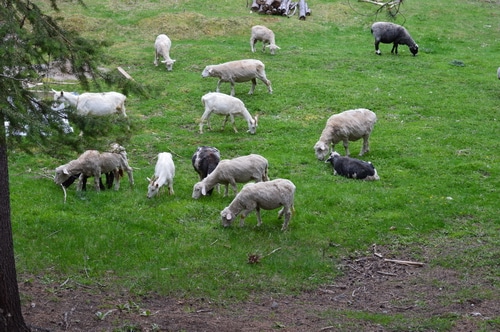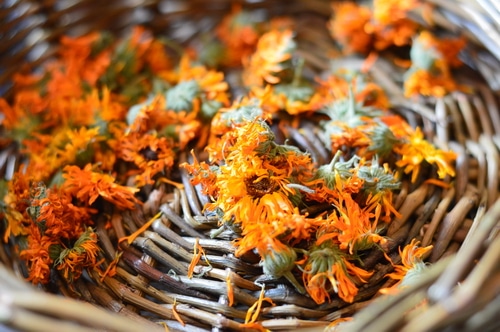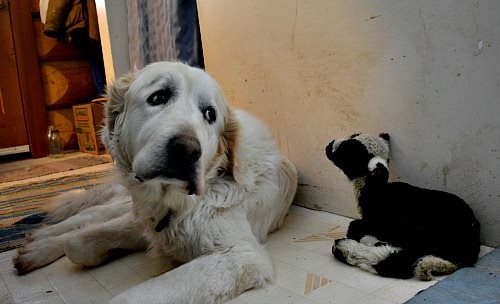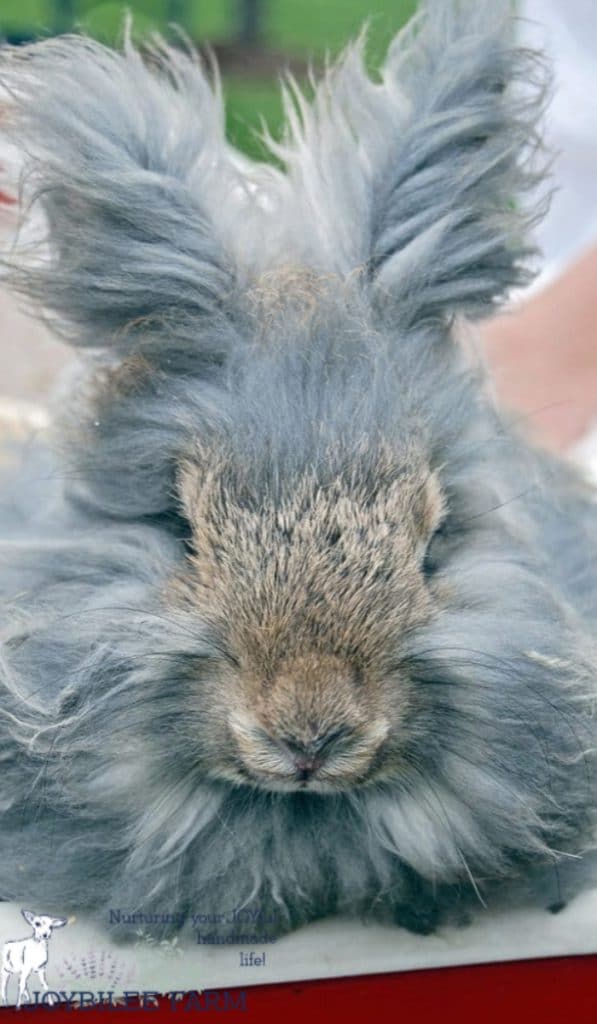How to Make Herbal First Aid Salve for Livestock
Herbal first aid salve is handy to have around the homestead. It is our first line of defense when animals receive minor injuries. Be sure to keep some on hand for emergency first-aid treatment.
While factory farming makes extensive use of routine antibiotics in livestock feeding and animal husbandry, most homesteaders avoid the use of antibiotics in all but extreme emergencies. This is a good change.
Routine use of antibiotics in food livestock has given rise to antibiotic-resistant bacteria — deadly bacteria. Those of us who raise our own food, want to ensure that we also aren’t raising antibiotic-resistant Super-bugs. By limiting our use of antibiotics on the homestead we can create healthier food and healthier animals.
Having natural remedies like this herbal first aid salve handy is the first and easiest way to treat the minor injuries that often occur on the farm. This keeps our animals safe and healthy without exposing them to more antibiotics than are necessary.
How to support healing in your livestock
Livestock that receives adequate natural food, minerals, and pasture for their needs will be naturally resistant to most diseases. When disease does crop up, it can often be traced to a husbandry issue, unsanitary housing conditions, inadequate ventilation, overgrazed pastures, or wet, damp weather and ground conditions. By keeping livestock on clean pastures, ensuring that your animals have adequate minerals, including enough copper sulphate for goats, and giving them dry, well-limed bedding to keep the noxious odours down, you will avoid most disease issues with your animals.
Home-based veterinary medicine
When health issues do arise, and they will, you can in many instances, turn to home-based veterinary medicines to support your animals’ healing. Herbs can be more effective than chemical medicines for livestock, just as they are for humans. They can help heal systemic issues because they are nutritive as well as healing. At Joybilee Farm we look to herbal medicine first, before calling the vet. This article is part of a series of articles on using herbal home-based medicine on your homestead for your livestock.

How to make an herbal first aid salve for minor cuts, abrasions, bites, and scratches
Herbs that are specific to fight inflammation and infection are your first choices in making a first aid salve for your livestock. Herbs like Balm of Gilead, Pine, Willow, St. Johns Wort, Calendula, Comfrey, rose, and Arnica can be combined in olive oil to make a healing salve for mild skin abrasions and to fight infection and inflammation.
Add to this tea tree essential oil and lavender essential oil for their antibiotic effect.
To make an herbal first aid salve for your livestock begin by gathering:
Balm of Gilead (Populus balsamifera ssp. trichocarpa)— these are the black cottonwood or balsam poplar (Populus balsamifera ssp. balsamifera) buds. Gather them any time after leaf drop in Fall until bud break in Spring. If you are too late and need the healing properties of this plant during the Summer, gather leaves and twigs and simmer in olive oil (don’t boil) — willow bark (Salix spp.) can also be used in this remedy if you can’t get balm of Gilead. Immerse the buds with their red resinous droplets in Olive Oil. Slowly warm the oil over low heat, and heat gently for one hour. Strain and reserve the oil.
Pine Pitch (pinus spp)– Immerse pine pitch in olive oil and simmer gently until the pitch is completely melted. Strain and reserve the oil.
St. John’s Wort (Hypericum perfatorum)– Gather the blossoms in July. Make an oil infusion by filling a quart jar with flowers and olive oil. Leave on a sunny window sill for 2 weeks. Strain the oil and reserve.
Calendula (Calendula officinalis)– Gather the blossoms in August and September. Make an oil infusion by filling a quart jar with flowers and olive oil. Leave on a sunny window sill for 2 weeks. Strain the oil and reserve.

Rose (Rosa canina)— Gather the blossoms in June and July. Make an oil infusion by filling a quart jar with flowers and olive oil. Leave on a sunny window sill for 2 weeks. Strain the oil and reserve.
Comfrey (Symphytum officinale)— Gather the young leaves as they grow. The younger leaves have more allantoin than older leaves. Make an oil infusion by filling a quart jar with leaves and olive oil. Leave on a sunny window sill for 2 weeks. Strain the oil and reserve.
Arnica (Arnica montana) – This is the yellow sunflower that is seen growing on the hillsides in dry climates from May to August. It is irritating when swallowed but is healing when used topically. Gather the flowers when in bloom. Make an oil infusion by filling a quart jar with flowers and olive oil. Leave on a sunny window sill for 2 weeks. Strain the oil and reserve.
To make the salve, gather all these infused oils or infuse the oil yourself as needed from dried plant materials. You can purchase these herbs as dried herbs, at Mountain Rose Herbs, if you are unable to grow them yourself. Get detailed instruction about how to make a salve in this article from Joybilee Farm.

Recipe: Herbal First Aid Salve for Homestead Livestock
- 1/4 cup grated beeswax
- 2 tablespoons each of Infused oils of Balm of Gilead, Pine, Comfrey, Rose, Calendula, St. Johns Wort, and Arnica. (you need 1 cup of infused oil in total)
- 1/4 teaspoon oil of oregano
- 2 ml tea tree essential oil
- 2 ml lavender essential oil
- 1/4 cup Virgin Coconut Oil
Directions:
- Simmer all ingredients in a double boiler or saucepan, just until beeswax and coconut oil are melted.
- Add 1 teaspoon of Vitamin E oil (natural source).
- Pour the mixture into a 1/2 pint glass jar.
This herbal salve for livestock will keep for 1 year if kept in a cool, dry place.
See also, How to Make Herb Infused Oils for Your Herbal Apothecary
When to use an herbal salve
When your animal has a nick, scratch, bruise, or swelling wash the affected area with hot water, soap, and rinse with hydrogen peroxide. Dry thoroughly.
Apply salve liberally and repeat twice daily. The addition of pine to this salve makes it a drawing salve, as well as a healing salve.
Herbal first aid salve for Homestead livestock is antifungal, antibacterial, anti-inflammatory, and encourages cell division and healing. It may be used on sprains, bruises, and areas with broken bones. In a severe injury, this salve will support other therapies in healing your animal.
If your animal is being bedded down in dirty conditions, you will need to clean up the environment that your animal is housed in to see strong results with this herbal remedy. Animals that are kept in unsanitary conditions will become reinfected easily. Keep your animals on clean dry ground, with adequate ventilation for best results.
Disclaimer: I am not a veterinarian and I do not give veterinary advice. I am sharing the recipes that I use on my own farm, with success. Your success rate may differ. If you have a serious issue with your livestock please consult your own alternative holistic veterinarian. If you are new to making herbal medicine please consult a reliable in print plant identification guide before you gather plant material from the wild. Some plants are poisonous.
This post was last updated in May 2019
Learn more about using herbs for health and wellness from my Book

Homegrown Healing From Seed to Apothecary
My book Homegrown Healing From Seed to Apothecary will help you grow healing herbs in your own garden. Focusing on the easiest plants for beginners to grow, Homegrown Healing From Seed to Apothecary covers 30 plants, recommended by professional herbalists, that can be grown in the temperate zone. Initial garden preparation, garden design and harvesting tips lead the novice herbalist into early success. Choose which herbs to grow, learn how to use these herbs for your family’s health and wellness using the guidance in my book. You can find out more about this useful guide to growing more herbs and using them strategically here.






I wouldn’t use arnica on an open wound.
Where can I buy your herbal salve? I missed the link somehow. I acquired a miniature bunny a month or so ago and he is 5 years old or more. One of his hind feet is bald on the bottom and although I keep him clean, it looks a bit raw. I have started putting antibiotic ointment on it, but yours sounds like it would be better for him. I clean it with hot water, and then use a little hydrogen peroxide? Or is the hydrogen peroxide only used if it is an open wound?
Thank you so much for your help in advance.
Great ideas, lot to learn, thanks